Question
Who among the following sits second to the right of
N? Answer the given questions based on the information given below. Sixteen persons are sitting around the two square tables. One square table is inscribed in another. Two persons sit on each side of the table. The persons on the inner table have different number of balls while the persons on outer table like different colours. J, K, L, M, N, O, P and Q sit on one table while A, B, C, D, E, F, G and H sit on another table. Each of the persons on both tables is facing the closest person opposite to them on different tables such that the persons on inner table are facing outwards while persons on outer table are facing inwards. Persons on inner table have different number of balls from 1 to 8. Also, persons on outer table like different colours among, red, black, pink, yellow, white, grey, blue and green. Note: If A is facing B then both are sitting opposite to each other on the different tables but on the nearest seat. J sits opposite to one, who sits to the immediate left of L, who has 3 balls. Both J and L are sitting on the opposite sides of the same table. The persons facing L is three places away from D. Q has twice number of balls of M, who has 3 balls more than K. K faces E, who likes yellow color. O sits to the immediate right of P, who has 7 balls, on the same side. A, who likes white color, faces O, who has 6 balls. E does not sit adjacent to A or C and K is not adjacent to L. C, who likes green color, sits second to the right of A. G sits to the immediate right of F, who likes red color and both sit on the same side. P has 2 more balls than N, who does not face G. The one, who has 4 balls, faces B, who likes Pink. M is not adjacent to J, who is not to the immediate right of N. G does not like Grey or Blue color.Solution
J sits opposite to one, who sits immediate left of L, who has 3 balls. Also, both sit on same table. The persons facing L is three places away from D. Q has twice number of balls than that of M, who has 3 balls than K. So, K, M and Q have 1, 4 and 8 balls respectively. K faces E, who likes yellow color. O sits immediate right of P, who has 7 balls, on the same side. A, who likes white color, faces O, who has 6 balls. C, who likes green color, sits second to the right of A. G sits to the immediate right of F, who likes red color and both sit on the same side. So, we have four cases, Case-1a 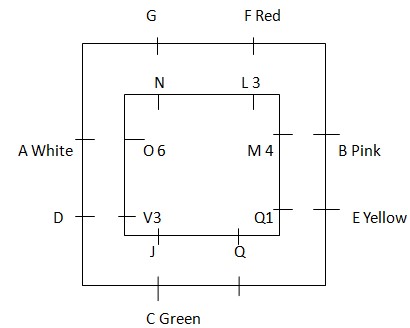 Case-1b
Case-1b 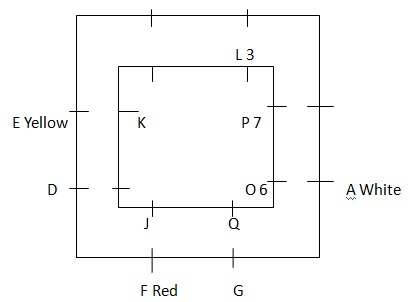 Case-2a
Case-2a 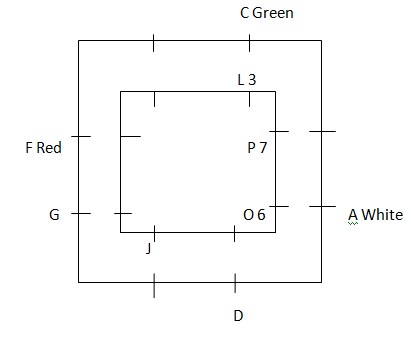 Case-2b
Case-2b 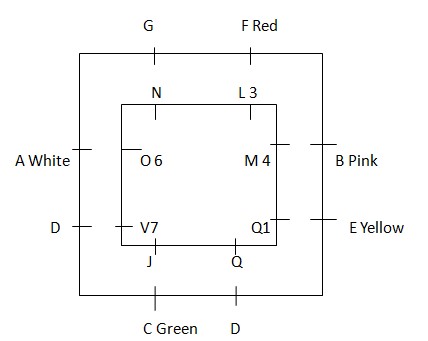 E does not sit adjacent to A or C and K is not adjacent to L. So, case 2(a) is rejected. P has 2 more balls than N, who does not face G. So, case 1(a) and 2(b) are rejected. The one, who has 4 balls, faces B, who likes Pink. M is not adjacent to J, who is not immediate right of N. G does not like Grey or Blue color. So, we have, Case-1b
E does not sit adjacent to A or C and K is not adjacent to L. So, case 2(a) is rejected. P has 2 more balls than N, who does not face G. So, case 1(a) and 2(b) are rejected. The one, who has 4 balls, faces B, who likes Pink. M is not adjacent to J, who is not immediate right of N. G does not like Grey or Blue color. So, we have, Case-1b 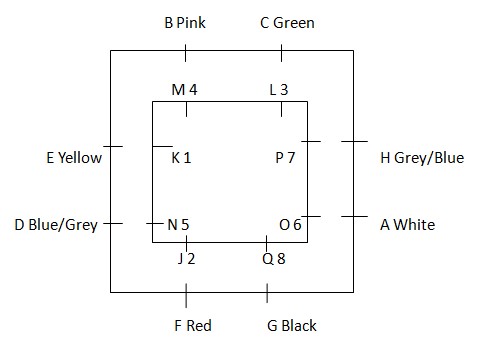
Securities with the combination of characteristics of debt and equity securities are known as
All single payment transactions of Rs. ______ crore and above undertaken by entities (non-individuals) should include remitter and beneficiary LEI infor...
The National Payments Corporation of India (NPCI) is an initiative taken by the _________________ to operate the retail payments and settlement systems ...
Match the following:
A) Authorised Capital P) for which company has received applications
B) Subscribed capital Q) Now shareholders
‘Goods in transit’ sent from Head Office are shown in the balance sheet at –
If Current Assets are 50,000 and Creditors is 7,000 and the Bank overdraft is 5,000, what will be figure of the Working Capital?
In case of a 'put option' when the strike price is above the spot price, the option is -
When RBI raises the Cash reserve Ratio rate what action are the banks required to take?
Which of the market can be divided into primary and secondary market?
Which institution is the most important constituent of Indian money market?



